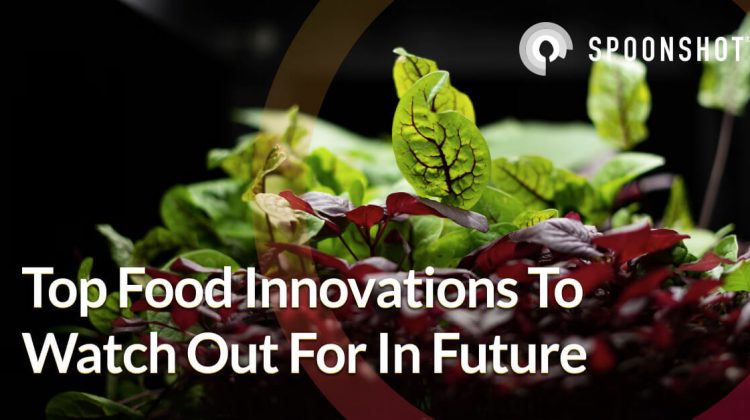
In a conversation around food innovation or even tech innovation, people often talk about concepts that are not yet a reality. It seems like a farfetched domain with no real-world implications. However, there are several ideas and innovations available in the F&B industry and these consumer products have become a reality and exist within our daily lives, majorly focusing on the food consumer needs.
What is Food Innovation?
When we say food innovation, we’re talking about the commodification and development of advanced food products, services, and processes. This revolution has already started and is changing the world right now. Food and beverage businesses have been exploring ways to provide nutrition and healthy offerings in attractive, accessible, unique, and sustainable ways that don’t damage the environment.
Top Food Innovations Today:
Take a look at the top 7 innovations in the food and beverage industry you should watch in 2022 –
1. Smart Plastic-free Packaging
For multiple decades now, food manufacturers have been using plastic in multiple forms as a part of food or product packaging as it is easily available and cheaper than other materials. In recent moves to combat climate change and global warming, the perspectives of consumers have started changing drastically. Manufacturers and retailers are now expected to take steps towards an eco-friendly product experience.
Smart packaging, also called nano-packaging, is a popular new replacement for plastic today. It detects microbial changes – physical and chemical – in food with the help of nanotechnology. Nanotech helps in determining how safe the food is, the product quality and whether it’s going to spoil soon.
2. Drinks Beyond Sugar and Fizz
With the advancements in nutritional research, more people have been taking closer looks at what their favorite beverages contain. They consciously avoid highly processed and artificially sweetened drinks that harm their body instead of providing nutrition.
This has resulted in the rise of health-focused drinks like fruit smoothies, kombucha, infused water, etc. There are already several beverage options that are rich in prebiotics and probiotics. In the coming year, this number will increase significantly and also include other healthy components like Omega 3.
Must Read: Food and Trends Prediction in 2022
3. Advanced Automation and Computerisation
The evolution of computerized technology for food processing has established autonomous machinery and automation as integral components in the food processing industry. With continuous price inflations and increasing demand, automation allows higher productivity in lesser time.
4. Modernising Traditional Processing Methods
The F&B industry is currently in the process of bringing back old and proven methods of food processing with new technology and improvements. One particular method that is seeing a strong revival is the technique of fermentation. This is in response to the rising demand for fermented food products and ingredients.
Traditionally, foods were fermented by mixing ingredients like saliva and rice with decaying fruit in bowls. These were then left for fermentation in small batches. Over hundreds of years, this fermentation process has been streamlined and a few undesirable ingredients have been eliminated. With advancements in technology, fermentation is now more hygienic, safer, and can be done in large batches. Technological functions like advanced analytics and precision temperature control have made it easier to meet the growing consumer demand.
5. Trust and Transparency
With the success of new and upcoming e-commerce platforms for beverage and food brands, larger businesses will have to give in and contribute more to their CSR ventures to maintain their competitive edge. F&B companies can improve their productivity and build better reputations with the integration of blockchain and other new technologies. They can also use Machine Learning and AI to track quality and product origins as they employ new methods in a bid to increase the trust customers place in them.
6. Forward Osmosis
In food processing units, the process of concentration helps in keeping food and ingredients fresh till they reach the customer. Forward osmosis is a gentler process for concentrating food that uses no heat and less energy. This process also allows food to retain more nutrients naturally during the processing stage. The result is higher-quality products and ingredients than ever before.
Also Read: Data Analytics in Food and Beverage Industry
7. Animal-free Plant-based Products
The exponential growth in the popularity of vegan, animal-free alternatives to meat products has taken the world by storm. This is also a result of growing conversations around climate change, business ethics, and our responsibility towards the world we live in. Animal-free products and ingredients first came up about a few decades ago, but only now is it becoming more commonplace.
Food innovation is a constantly evolving phenomenon. Every new year aims to bring about significant changes to how we consume food and what we put in our bodies and the environment. While some changes might seem small today, their impact can be significant and groundbreaking in the long run.



Leave a Reply